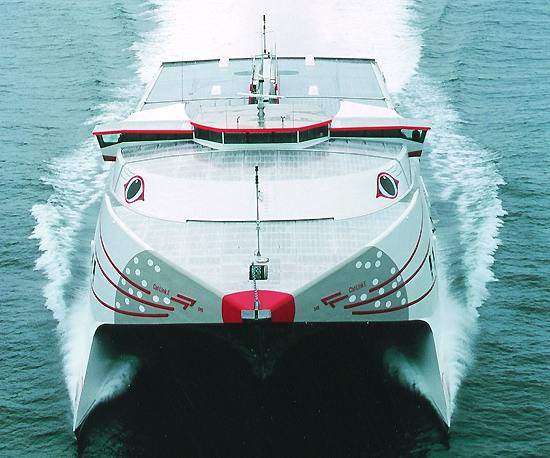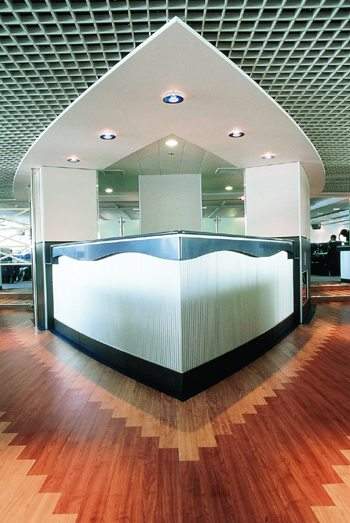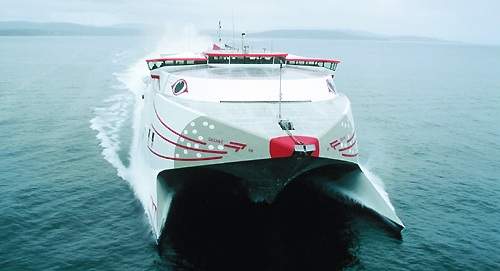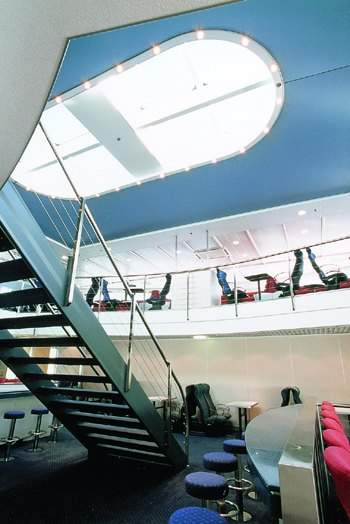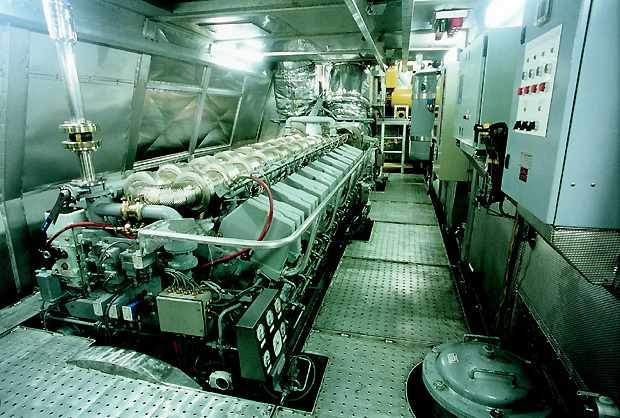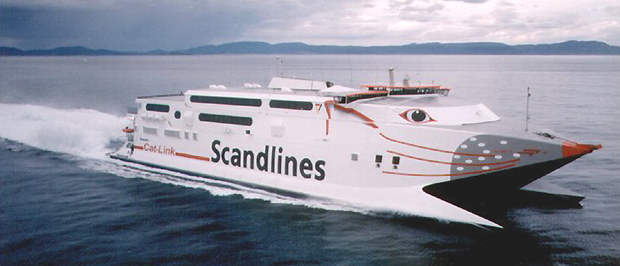The Cat-Link V 91m wave piercing catamarans are operated between Arhus and Kalundborg in Denmark by the ferry company Scandlines Cat-Link. The 42 nautical mile crossing between Arhus and Kalundborg is scheduled to take around 1 hour 15 minutes. Cat-Link V was constructed in 1998 at Incat’s Hobart facilities in Australia and it was awarded the Blue Riband in July 1998 for the fastest Transatlantic crossing, achieving an average 39.89 knots over 2,800nm. The previous holder was another Incat ship, the Catalonia.
DESIGN
Cat-Link V has an overall length of 91.3m and a waterline length of 81.33m. It has an overall beam of 26m and a hull beam of 4.33m, excluding fenders. The distance between the hull centreline to vessel centreline is 10.83m. It has a deadweight of 500t.
The Cat-Link V hull design is optimised for speeds in excess of 40kn, to minimise wave creation. At the bow, the waterborne hulls are 10% immersed and contain 10% reserve buoyancy. The remaining 80 per cent reserve buoyancy is held in the forward central hull, located above the loaded smooth waterline. This provides a safe ride in all weather conditions and sea angles. Ride has also been enhanced by increasing the waterline length of the ferry and by the Maritime Dynamics Inc ride control system. This system provides an active trim tab mounted at the transom of each hull for trim and motion dampening.
FACILITIES
While certified to carry 900 passengers, Scandlines Cat-Link A/S has chosen to limit Cat-Link V’s capacity to 800. Passengers enter the interior aft via the vehicle deck stairs or the terminal gangway. A port passage provides access for disabled passengers. A central atrium-style lounge located midships on tier 2 provides the focal point for all passenger services.
The ship’s office, located starboard forward, serves as an information centre and money exchange. The port side houses an arcade-games area. An open staircase, located in the central atrium, extends to tier 3, where passengers are greeted by panoramic views of the horizon and the wave piercer Bar.
Passengers on tier 3 have the choice of banquette or aircraft-style seating, arranged with facing tables and quiet rooms/business lounges. The forward observation deck allows passengers to view the operations of the bridge or to just admire the sea view.
PROPULSION
The vessel is powered by four Ruston 20 RK270 conventional medium-speed diesel engines that reach 7080kW each. Each engine drives a transom-mounted waterjet (Lips LJ145D) through a Renk ASL60 reduction gearbox. The custom-designed Lipstronic jet control system provides, apart from steering and reversing, the option of thrust vectoring and autopilot. The waterjets give the Cat Link IV a two-way average speed of 48.2 knots, or 43.0 knots laden. Two 230kW Caterpillar generators in each hull feed associated independent main switchboards and disconnect in an emergency.
AUTOMATION AND CONTROL
The ship’s position is provided by a Decca MX400B, which is a six-channel GPS with built-in DGPS Beacon Receiver. Accuracy with DGPS is 1-5m (2DRMS), +/-0.05 m/s. Primary navigation is performed by the two Decca BridgeMaster II 250 Series radars. The Navigator’s radar uses a 30kW S-Band transceiver transmitting at 3GHz with a 12ft scanner. The Captain’s radar is an X-Band 25kW unit transmitting at 9.4GHz into a 6ft scanner.
A Skipper GDS101 with a 50kHz transceiver provides sea bottom detection. Long-range communications in the 2MHz to 30MHz band is catered for by a Skanti TRP7200 transceiver. Two Skanti VHF3000 25W transceivers, operating at 155MHz to 163MHz, provide short-range communications.

